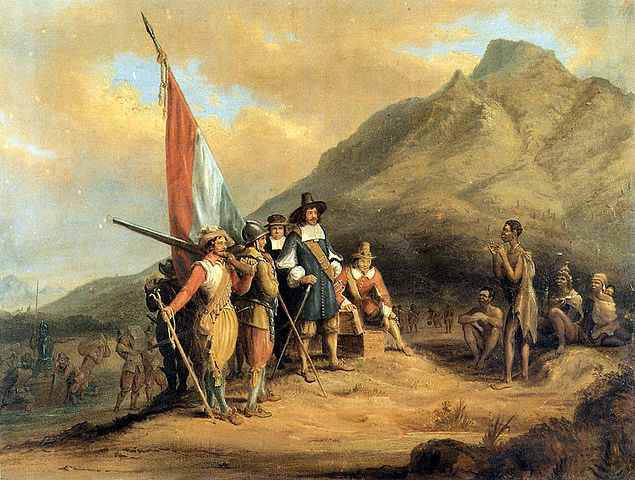Riebeek Cellars is located in the picturesque Riebeek Valley, in the heart of the Swartland wine region of South Africa. Established in 1941 by a group of nine local farmers, they are guided by Dutch & French traditions dating back 350 years.
It was Dutch explorer Pieter Cruythoff who stumbled upon the Riebeek Valley in 1661. Impressed by the single standing mountain, he called it Kasteelberg (“Castle Mountain”) commemorating the Castle of Good Hope in Cape Town, the fortress of Commander Jan van Riebeeck. The twin towns, Riebeek Kasteel and Riebeek West, established at the foot of Kasteelberg, are therefore also suitably named after Van Riebeek. 27 years later, the French Huguenots arrived at the Cape, after fleeing persecution. They deemed the terroir more than suitable for the continuation of their esteemed winemaking legacy.
 Commander Jan van Riebeeck
Commander Jan van Riebeeck
Today Riebeek Cellars is an authentic W.O. Swartland producer. They source grapes from a group of 22 growers across the Riebeek Valley, including 3rd and 4th generation wine grape growers. Sourcing only from this select group ensures continuity of the finest quality and preservation of the terroir. They produce around 1.2 million 9-liter cases per year.
The vineyards of Riebeek Cellars lie in a richly diverse area in terms of soil, climate and topography. Vineyards are situated at heights that vary from 60 meters above sea level to 300 meters against the slopes of the Kasteelberg mountains. Because of the topography, the soils display the same rich variety: Oakleaf and Dundee alluvial soil formed by sediment from the Berg River; Swartland and Glenrosa soils formed out of underlying shale along the Kasteelberg mountains; and the notable ‘Koffieklip’ (coffee stone) soil - a combination of clay and iron-rich Ferricrete deposits, known widely throughout South Africa for its erosion-resistant qualities.

It is this unique terroir that distinguishes the wines of Riebeek Cellars. Rainfall occurs during winter months with enough cold units to ensure a proper rest phase for the vines before bud-break in early September. The summers are sunny and warm with cooling westerly winds that are ideal conditions for producing fine white and red wines.
A wide array of cultivars thrives in the Riebeek Valley, with Shiraz, Chardonnay and Chenin Blanc especially shining through thanks to the gravel and shale soil’s moderate growth and yields. The excellent terroir is complemented by modern viticulture techniques to ensure the grapes can ripen to their full potential.

Zakkie Bester, CEO/Cellar Master of Riebeek Cellars, reveals how four of his highly rated and diverse wines uniquely portray the lifestyle of this South African artist community. Click here for the complete article and video.
Riebeek Cellars, located on the western coast of the Cape Province of South Africa, was established over 70 years ago. These wines are meant to be consumed early in life, and therefore the focus is on unmanipulated, unadulterated, straightforward, abundant fruit."
Robert Parker's Wine Advocate (Issue #208, August 2013)
"Located in the Western Cape region of South Africa, this winery was established in 1941, which makes it relatively old compared to all the new wineries that have sprung up in this area. Among the first Pinotages I can recommend, it's also a good value. Pinotage, which is, of course, ubiquitous in South Africa, was first made in 1941, when the Cinsault grape (primarily grown in southern France and the Rhone Valley) was crossed with Pinot Noir." -
Robert Parker's Wine Advocate (Issue 201, June 2012)